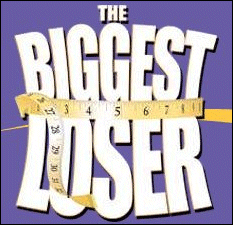Serendip is an independent site partnering with faculty at multiple colleges and universities around the world. Happy exploring!
Precarious, Performative, Playful, Potential...Perspectives!

| Welcome to Precarious, Performative, Potential, Playful.... Perspectives, the core course in Gender and Sexuality Studies, offered in Fall 2011 @ Bryn Mawr College. This is an interestingly different kind of place for writing, and may take some getting used to. The first thing to keep in mind is that it's not a site for "formal writing" or "finished thoughts." It's a place for thoughts-in-progress, for what you're thinking (whether you know it or not) on your way to what you think next. Imagine that you're just talking to some people you've met. This is a "conversation" place, a place to find out what you're thinking yourself, and what other people are thinking. The idea here is that your "thoughts in progress" can help others with their thinking, and theirs can help you with yours. |
So who are you writing for? Primarily for yourself, and for others in our course. But also for the world. This is a "public" forum, so people anywhere on the web might look in. That's the second thing to keep in mind here. You're writing for yourself, for others in the class, AND for others you might or might not know. So, your thoughts in progress can contribute to the thoughts in progress of LOTS of people. The web is giving increasing reality to the idea that there can actually evolve a world community, and you're part of helping to bring that about.
We're glad to have you along, and hope you come to both enjoy and value our shared explorations. Feel free to comment on any post below, or to POST YOUR THOUGHTS HERE.

My notes from Butler's second talk....
Bodies in Alliance and the Politics of the Street
* gender politics in alliance w/ that of other precarious peoples
* expand the "we"

Symphonies of Science and Diffraction
chelseam and I listened to this song all the time last year. It was only tonight, though, when we revisited the video, that we realized that Barad could totally jam to this! Enjoy-- and remember, "we are all connected."

Symphonies of Science and Diffraction
chelseam and I listened to this song all the time last year. It was only tonight, though, when we revisited the video, that we realized that Barad could totally jam to this! Enjoy-- and remember, "we are all connected."
“Exit Sign” (Trigger Warning: rape and sexual assault, abuse of trans* and intersex individuals)
This is DEFINITELY the most non-traditional blog post I’ve done, but I’d like to explain my reactions to the previous class in a format similar to the one that Karen Barad uses in “Quantum Entanglements and Hauntological Relations of Inheritance: Dis/continuities, SpaceTime Enfoldings, and Justice-to-Come." I think the way in which she embodies the electron is a pretty decent representation of the way I feel about the Right to Appear as it relates to gender non-normative and intersex victims of rape and sexual assault.
Act 1, Scene 1
SpaceTime Coordinates: The internet, as altered through PPPP, sieved through Bryn Mawr and Haverford students and faculty, diffracted through the 1993 murder of Brandon Teena, extruded through the 1999 movie Boys Don’t Cry which depicted Brandon’s brutal murder, mixed with the medical treatment of intersex and gender non-normative individuals, shone through a three-slit experiment in which the slits represent Judith Butler’s notions of the “Right to Appear,” Sharon Welch’s ideas on personification of a disastrous event by knowing someone affected, and Karen Barad’s ideas of entanglement and diffraction, explained by a 21-year-old, female-bodied, FAAB, genderqueer college senior with a history of sexual trauma and a considerable number of friends and family members who have experienced some sort of trauma, as well.

I wanted to respond to our discussion last night...
I want to be clear in this post that I am only speaking for myself, and that I am not attempting to invallidate anyone else's thoughts or feelings about last night's discussion of Eve Ensler's piece.
That said, it was a very triggering discussion for me, which came on the heels of dealing with a triggering text in another class.
I've been dreading that sort of thing since the beginning of the semester, even though I assumed that it was inevitable that I would encounter some texts and some discussions which would recall past traumas and elicit a very emotional reaction. I expected that when this happened, I would become quieter and would feel even less like I belonged in the class as that is how I've experienced triggering materials in other classes.
What surprised me was that last night's call for litanies and group discussions actually compelled me to be louder and more assertive.

Leymah Gbowee
This year's Nobel Peace Prize was awarded to Leymah Gbowee, who led the women's movement that leveraged public protests and sex strikes to end Liberia's civil war in 2003. She now works internationally to help women build peace in their countries. Jon Stewart interviewed her on the daily show on Monday: http://www.thedailyshow.com/extended-interviews/402235/playlist_tds_extended_leymah_gbowee/402213

Higher Ed and Global Gender Equity
I thought some of you might be interested in the most recent issue of On Campus with Women published by the Association of American Colleges and Universities (AAC&U) that focuses Higher Education and Global Gender Equity. Articles include: "Nelly Stromquist of the University o

Still seeking that "right relationship"
Kaye and I had designed our class tonight in search of the "right relationship" between theory and action, in which we were nudging you all repeatedly to think about the ways in which the intra-active thinking of Barad, Butler, Humbach and Welch might help us construct a concrete activist agenda or political response.
By the end of our discussion, though, we both realized that we'd activated a much more insistent dynamic than that of theory and action: that of reason and emotion--perhaps particularly because we'd chosen to structure the class around the repetitive exercise of reading passages aloud, passages that, in their evocative echoes, evoked a range of strong emotional responses. Our action in the world might well be guided by theory (as Butler has been saying). But it is also clearly always motivated by other sources, those of experience and emotion. As Humbach observes in his thinking "Towards a Natural Justice of Right Relationships,"the results of reason alone never directly determine the specifics of people's actions...we can be reflective, but we can never hope to exert rational control over the selection of things that we reflect about."

not yet over it
Anne and I had designed tonight's class intending to diffract theory and action and to explore how Butler, Barad, Humbach and Welsh might inform and strengthen our work for social justice. However, our lesson plan (or apparatus in Barad's term) revealed a different dimension of this phenomenon. The political responses you shared at the end of class addressed (as we had hoped) important problems of gender and sexuality and were theoretically informed, but what struck me was their raw emotional power. I had not anticipated this irruption of emotion, for theory often presents itself as abstract, rational, distant and can be interrogated using just our intellect. What generated this more visceral response? Unquestionably, rape is a charged, emotional, non-abstract experience for too many people. Yet, we can write papers about rape culture, post responses on Serendip, critique representations in the media. But, perhaps those formats don't engage us the same way as what what we asked you to do tonight? In some ways, academic papers don't ask students to "appear" as whole people, but let them just engage intellectually. Perhaps, academic papers and postings on Serendip are not really public, not really private, but exist in some interstitial zone? I also wonder how much the reading of Ensler's litany and the power of repetition, the speaking out of the violations, the rhythm of her words resonate with our bodies and evoke a more embodied response? I remember the first time I went to a display of the AIDS quilt an

Just To Clarify...

We're currently in class completing break-out groups that discuss Butler, Barad, Welch, and Humbach, specifically in regard to Eve Ensler's Huffington Post piece "Over It" (11 November 2011). In her writing, Ensler says that she is over "rape pages on Facebook" and "the thousands of people who signed those pages with their real names without shame." Three of my peers questioned what a rape page is - I'm attaching a link also printed by the Huffington Post entitled "Facebook Pulls A Few Controversial Rape Pages, But Many Remain" (9 November 2011) to clarify Ensler's words and to create more awareness for this specific issue.
Diffracting Butler and Arendt Through Incan Astronomy
Tonight at Bryn Mawr College, Judith Butler, in her second lecture of the Flexner Lecture series, responded to Hannah Arendt’s assertion that action and speech create a political space between participants; such spaces are not constituted by individuals, but rather by the interactions between many of them. The body provides the means to see one’s own perspective but also displaces the singular perspective because bodies do not act alone; rather, action (and meaning) emerges from the “between.” We appear to others in ways that we do not know, and are politically constituted by perspectives unbeknownst to us. Butler responded by acknowledging the truth in Arendt’s conception of political space, but also that material supports are necessary for action. In the spirit of striving to be interdisciplinary, I found myself relating Arendt and Butler’s ideas about political space to Incan astronomy. As I learned upon visiting Inca ruins in Cusco, Peru during my semester abroad last spring, our tour guide taught us that the Inca looked for constellations not by imagining shapes around the stars, as the Greeks did, but rather by seeing the black space between the stars. The pinpoints of light acted as the “supports,” but the image could not be seen through just one single star. Rather, through the existence and placement of many individual stars, the Inca saw meaningful images between them.
Soda: NOT for women?
Apparently soda is gendered now. Or at least the marketing team for Dr. Pepper thinks so. "Dr. Pepper 10" is a new diet soda for men "with just 10 manly calories." It's "not for women." They should have stuck with their old slogan, because this does not make me want to be a pepper too.

Are We Merely Bugs in Amber?
Barad’s quantum entanglement, diffracted through Kurt Vonnegut’s Slaughterhouse Five.
“Billy Pilgrim says that the Universe does not look like a lot of bright little dots to the creatures from Tralfamadore. The creatures can see where each star has been and where it is going, so that the heavens are filled with rarefied, luminous spaghetti. And Tralfamadorieans don’t see human beings as two-legged creatures, either. The see them as great millipedes—‘with babies’ legs at one end and old people’s legs at the other,’ says Billy Pilgrim.”
(Slaughterhouse Five, 110)


Humbach, Gayness, Rights and Justice- a lot to be thinking about
Humbach's argument for the distinction between the justice of/for rights and the justice of right relationships has me thinking a lot about next Butler lecture, titled Gender and its Allies: Performativity in Precarity. I've noticed in the posts throughout last week and this weekend that many of my classmates are similarly struggling with Anne's question of * how is all this related to gender studies? I think after reading Humbach I better understand Judith Butler's comments on Gay Marraige, Gays in the Military and (although she didn't comment on this one) Gays adopting.
"Women's" College?
I'm not sure who else in this class uses the blog host tumblr, but I do. Recently, I came across a conversation started by a trans* female author, titled "People who attend cissexist "women only" colleges". The following is the entire first post:
Your college is a joke.
I hope you wake up every day and think, “I wonder why my college sucks as greatly as it does.”
But you don’t have to wonder. It sucks because it’s cissexist.
And I don’t know if Bryn Mawr is an inclusive environment, but after reading this paper [tw: cissexism, biological determinism, an anti-intersex slur or two], I hope every person there is ashamed of their school.
I hope every single person there feels bad.
A bunch of Bryn Mawr students (myself included) rushed to defend Bryn Mawr, explaining that Admissions' policy is to accept applications on a case-by-case basis. But, in some ways, I can't help feeling that she's right. I DO feel ashamed that Bryn Mawr doesn't have a firm policy on accepting trans* women: as a school that was started with an attempt to help remedy the hugely problematic disinclusion of women in higher education, how can we ignore a disenfranchised group of women? How come we don't accept their applications unconditionally, and then accept or reject their admission as we would any other student? Why do we have to have a condition on the acceptance of women whose rights need to be supported?

Judy & Karen
I went into both lectures of the previous week with mixed feelings. I was excited to be in the presence of “rockstars” in the gender world, but I was a bit worried because I have found that both Judith Butler and Karen Barard’s work tend to go over my head. I was quite pleased to find myself following along. I found Karen to be much easier to follow fully, which shocked me because I find her writing to be too phsyics-y for me, and yet, I understood her discussion of spacetime. As for with Judith, I followed her less. I enjoyed the artful construct of her sentences, even if I couldn’t always detect the meaning of them. I did, however, really enjoy her answer to the audience member who asked about gay people’s right to adopt. I felt that her response acknowledged both her professional and personal feelings on the subject and that it was tactfully delivered. I am looking forward to hearing her speak again on Monday.

Reading Ponderings (and what makes a life worth grieving for)
In completing the readings for next class I was left with many questions. The article brought up great points about intra-action, right relationships, accountability, action, and mourning. How does it all fit in with gender and sexuality? Some connections I can see, others I am struggling more with.
From what we read of Humbach, I was somewhat puzzled by the example with Mr. Able, Baker, and Charles (11). I understand that Able represents a right relationship and that Charles is not, but how Baker is described as imitating a right relationship confuses me. Is it that he himself considered stealing the camera the problem, or would just recognizing the fact that it could be stolen be a problem? If you see a car door left open, expensive stereo equipment inside in a bad part of town and think to yourself that someone might or could steal it put you in a “wrong” relationship? I’m not sure of the line on this one…
In addition, does the fact that someone can and does “act most viciously” mean that all of their relationships are wrong relationships (13)? I don’t think so- even murderers care about friends and family, and their wrong relationships with their victims does not invalidate the right relationships that they have had in their lives. Can “seeming” even count as a right relationship? How can you tell if a relationship is right or if it only seems to be?
Thoughts on Butler and Barad
I have, admittedly, been putting this post off, because I'm not really sure what to say regarding the two very different lectures. Between the darkness in Goodheart during Butler's lecture that prevented me from being able to take readable notes, and my struggle to try understand and make sense of Barad's lecture, I'm left with a bunch of, well, entangled thoughts on gender, space, and time. I was apprehensive about Butler's lecture, because of the way her writing is, however, I found her lecture to be very accessible and easy to understand. I wish I could say the same for Barad. I'm still trying to process Barad's thoughts, and I'm re-reading my notes from her lecture, and the article. In the meantime, please enjoy some of my dis-jionted, entangled notes from Butler and Barad...
-diffraction
-the right to appear
-bodily enactment of gender norms
-trans/formation
-quantum leap (I love that show!)
-queer
-identity politics
-quantum dis-continuity
-matter
-gender not only received but enacted
-intra-action







